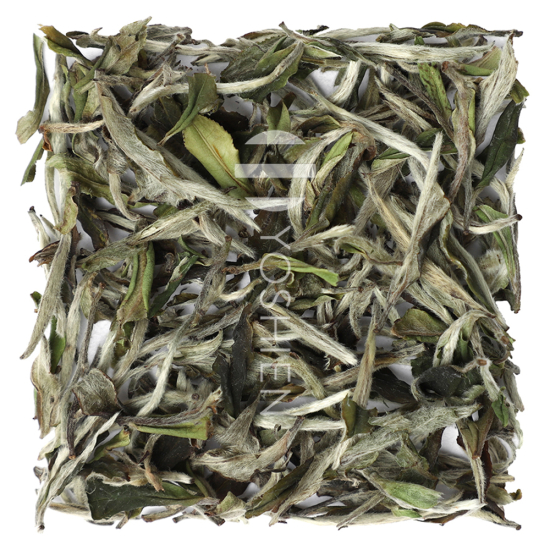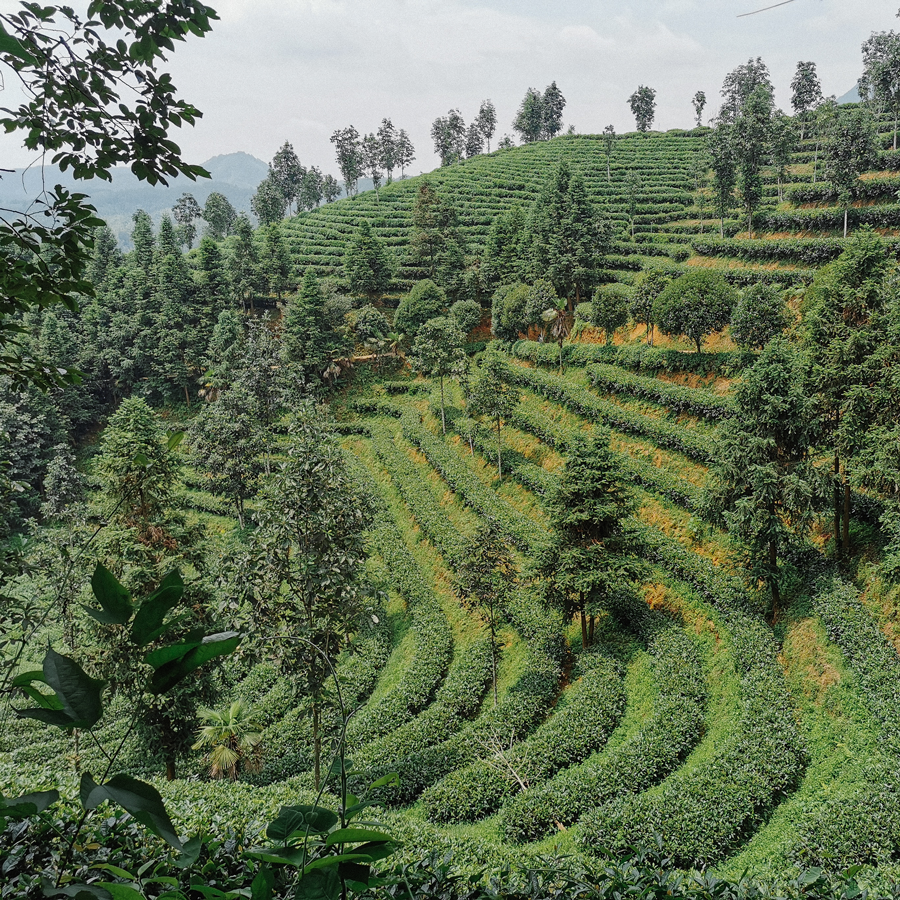Special features in location, cultivation and processing
The geographical conditions in Zheng He could not be better for growing top-quality tea. The region is characterised by a mountainous, river-rich landscape, far removed from major metropolitan areas. The altitude ranges between 800-1000 metres, making it even slightly higher than neighbouring Fuding. The reduced sunlight and frequent rainfall make the plants grow at a slower pace, allowing them to absorb a particularly high amount of minerals from the fertile soil. As a result, the plants become highly nutrient-rich and develop an especially intense flavour.
The tea farm itself is sheltered from the wind, enclosed by the mountains of the regional Wuyi range, and is located near the town of Sonxi. Sonxi has a tea history spanning more than 1000 years, making the tea plant deeply rooted in the culture of the local people. Cultivation on the farm is carried out without the use of pesticides. To aerate and enrich the soil with minerals, the neighbours’ cows are regularly led across the tea fields.
The hand-picked leaves and buds for this tea come from the first harvest of the year, which typically begins in late March or early April. Due to the region’s unstable and rainy weather, the tea undergoes a mixed withering process (Chinese: Fùshì wēidiāo 複式萎凋), where the tea leaves are alternately dried indoors and outdoors. On the first night, the leaves and buds are usually wilted indoors to protect them from the weather before being exposed to fresh air drying the next day. The tea is spread out on stacked bamboo withering trays, shielding it from excessive sunlight while allowing for even withering. This process extends over several days until the tea reaches the desired level of maturity. Finally, any remaining moisture is gently removed through careful oven drying.























